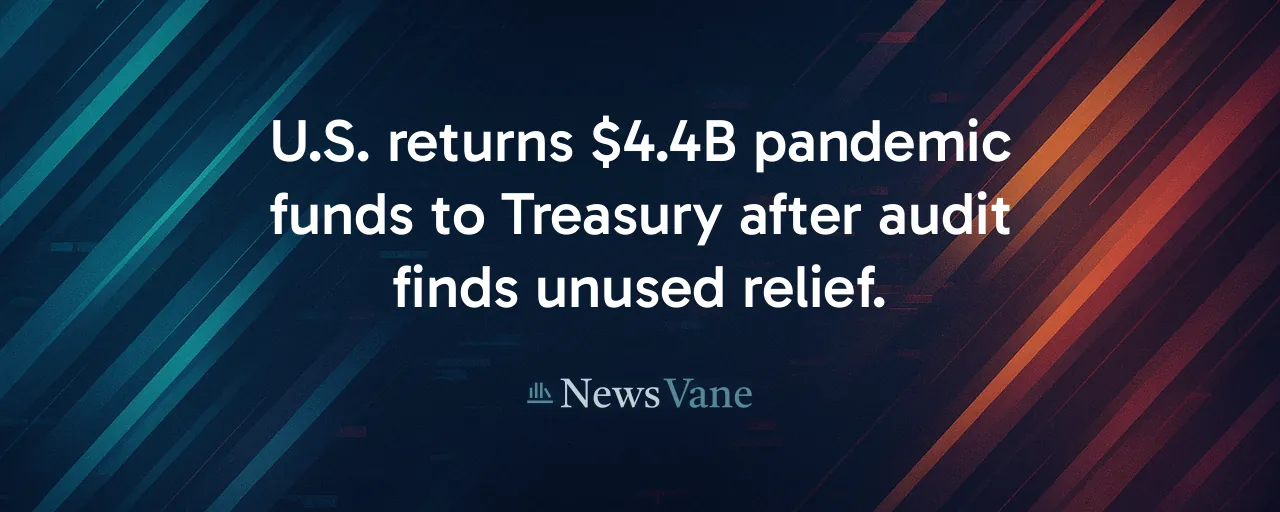A Historic Transfer of Funds
The U.S. Department of Labor recently transferred $4.4 billion to the Treasury's General Fund, money once set aside for unemployment insurance during the COVID-19 crisis. The process began in March 2025 with $1.4 billion and concluded in June, closing a chapter on emergency relief. These funds, meant to support workers sidelined by the pandemic, became surplus as the economy stabilized, prompting a decision to return them.
A 2023 audit by the Department's Office of Inspector General sparked this move, identifying unspent funds in state accounts. The dollars stemmed from the 2020 CARES Act, which backed programs like the Temporary Full Federal Funding of the First Week of Compensable Regular Unemployment for States with No Waiting Week program. States that eliminated waiting periods received full federal support, yet some failed to use the money or misallocated it.
The Push for Accountability
The CARES Act, part of a $4 trillion relief effort, delivered $878 billion in unemployment benefits from 2020 to 2021, cushioning job losses and stabilizing households. However, the rush to distribute aid exposed weaknesses. Many state unemployment systems, reliant on outdated technology, faltered under the volume of claims. Fraud siphoned off at least $60 billion, and unspent billions lingered as program rules lapsed.
Labor Secretary Lori Chavez-DeRemer framed the return as a commitment to fiscal responsibility. Unspent funds, she argued, should not inflate the federal debt or sit idle. Returning them allows redirection to pressing needs, like manufacturing incentives or tax credits. This aligns with broader efforts, including a 2023 debt-ceiling agreement that reclaimed $27 billion in unused relief across agencies.
Concerns Over Lost Opportunities
Some stakeholders view the return differently. Advocates for robust social programs, including former Labor official Michele Evermore, argue that the $4.4 billion could have fortified state unemployment systems. Many agencies still grapple with outdated IT and weak fraud-prevention measures. With economic growth slowing and interest rates elevated, the loss of these funds could hinder preparedness for future downturns.
Evidence supports their worries. Expanded unemployment benefits in 2021 reduced poverty by nearly half a percentage point, especially for low-income and minority communities. Economists and advocates for social safety nets contend that rescinding funds, including American Rescue Plan Act grants for system upgrades, risks undermining vulnerable workers and state budgets.
A Broader Fiscal Debate
This transfer reflects deeper tensions over federal spending. With the national debt exceeding $35 trillion and annual interest costs approaching $1 trillion, policymakers face tough choices. Some advocate for enhanced oversight, like a proposed bill to track federal spending in real time. Others prioritize a "Resilience Fund" to strengthen unemployment trust funds for future crises.
Past relief efforts, from the New Deal to the 2009 Recovery Act, reveal a pattern: rapid aid averts disaster but often invites waste. The CARES Act staved off a worse recession, yet oversight struggled. In 2024, agencies reported $247 billion in improper payments. New tools, like Treasury's Do Not Pay portal, aim to improve transparency, but systemic gaps persist.
The Future of Unemployment Insurance
The return of funds sharpens focus on unemployment insurance reform. Established in 1935, the system has long faced scrutiny for inconsistent benefits and aging infrastructure. Pandemic expansions proved that broader eligibility and higher payments can ease hardship, but their 2021 expiration reignited calls for change. Ideas include automatic benefit extensions during recessions and a federal baseline for benefit levels.
States now confront modernization challenges without anticipated funds. Congressional bipartisan groups are exploring state-federal hybrid models, but disputes over costs and scope remain. A weakening trust fund or sudden recession could expose the system's vulnerabilities, affecting workers and businesses alike.
What Lies Ahead
The $4.4 billion return is complete, but its impact endures. For some, it signals responsible governance, ensuring taxpayer dollars are used wisely. For others, it represents a missed chance to bolster a critical safety net. Both perspectives highlight the need for a more resilient system.
As discussions on debt, taxes, and social programs intensify, the focus remains on balancing immediate needs with long-term stability. Effective relief can protect lives and economies, but only with strong oversight to prevent misuse. The next crisis will reveal whether policymakers can apply these lessons effectively.
For everyday Americans, the question is practical: how will these decisions shape their security? The answer depends on how leaders allocate remaining resources and whether they can unite to build a system ready for future challenges.
